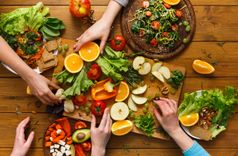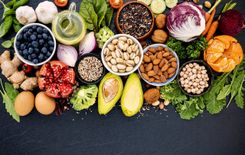A guide to understanding sugar labels

Food labels can provide us with information to help us make healthier choices. However, it can be tricky to know what to look for and to know what some of the nutritional terms actually mean. For those looking to manage their weight, metabolic health and general well-being, it can be helpful to have a firmer grasp on carbohydrates and sugars, so let’s take a closer look at this!
What labels to expect
The first thing to know is that you may encounter different types of labels on different food products. For instance, by law, the majority of pre-packed foods will provide a back-of-pack label, displaying detailed information per 100g or 100ml, as well as per portion. Some of this information may then be repeated on a front-of-pack label, where quantities of key nutrients are colour coded as red, amber or green. It is worth noting that these traffic light labels are voluntary and so are not always present, but they can prove really useful when wanting to quickly compare different food products. Given the significant impacts of excess sugar, you will be able to locate information about a product's sugar content within both of these label formats.
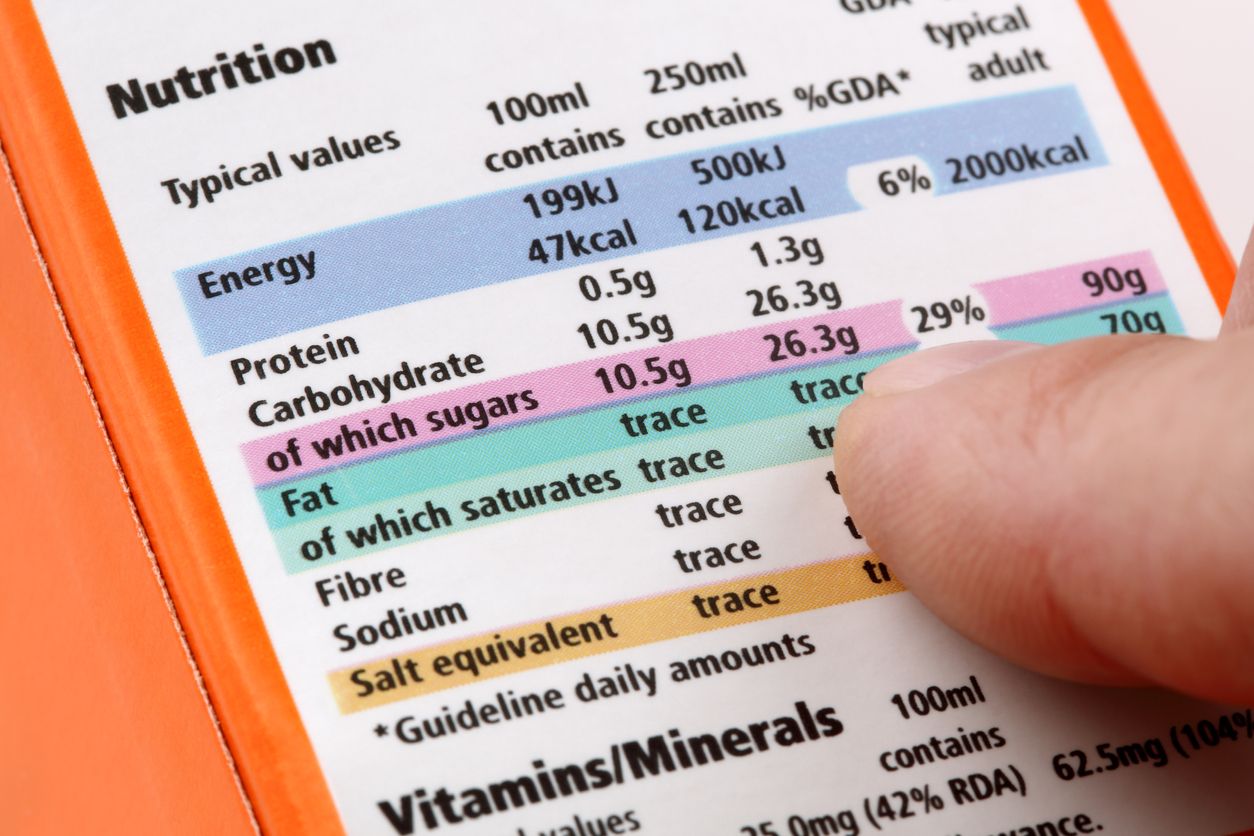
Nutrition labelling terms explained
Let’s start with the back-of-pack label. Here, you will be able to see the carbohydrate content, which is made up of both starches and sugars. Starch is typically found in things like bread, pasta, rice and potatoes, offering a good source of energy, fibre and micronutrients such as calcium, iron and B vitamins. Meanwhile, the sugars may be those naturally present within the product, such as is the case for whole fruit or milk, or they can be added by the manufacturer, which is referred to as ‘free sugars’. These include any sugars added to items such as biscuits, chocolate, flavoured yoghuts, cereals, soups and fizzy drinks, as well as sugars in honey, syrups (such as maple, agave and golden), nectars (such as blossom), unsweetened fruit juices, vegetable juices and smoothies. The latter may be sugars naturally occurring in real whole foods like fruit, but when had in isolation, instead of part of the whole fruit, these still count as ‘free sugars’. This is because in a whole fruit the sugar is accompanied by other nutrients like fibre, vitamins and minerals which actually change the impact of that sugar on our health, slowing its absorption.
Now, as we have already said, the carbohydrate content can include starches and sugars, but it is in fact the sugar content that can impact our health and thus need to be more mindful of. Hence, you can find out the ‘total sugar’ content of a product by viewing the ‘of which sugars’ section on the back-of-pack label. This will declare all sugars, both those added by the manufacture and those that are naturally occurring in items such as whole fruit and milk. This information will often be repeated as ‘Sugars’ on the front-of-pack traffic light label, while carbohydrates will only be visible on the back-of-pack information.
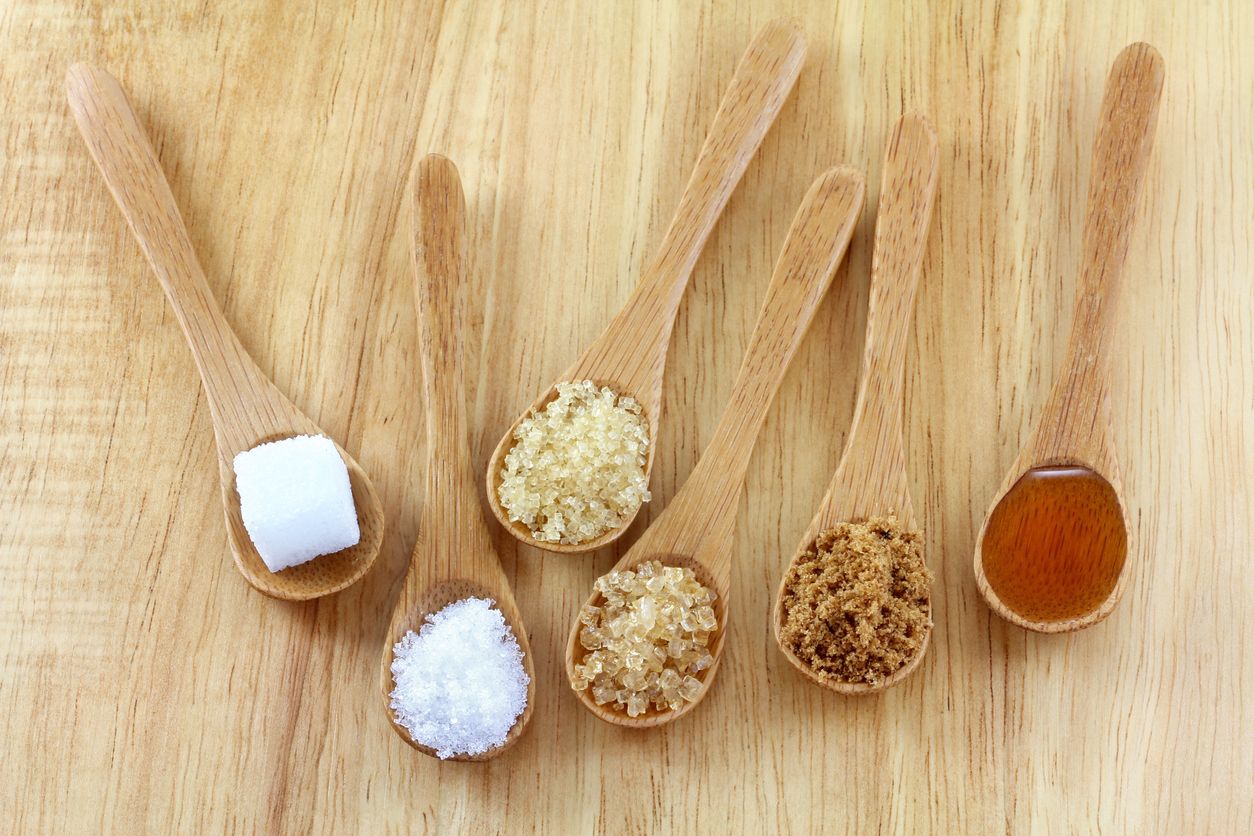
Recommended sugar intakes
The sugars naturally present in whole fruit, vegetables and milk do not count as ‘free sugars’ and are not those that we need to cut down on. Instead, government dietary recommendations are based on ‘free sugars’, as it is these that we are generally overconsuming and that can have negative implications for our health. Current guidance stated that no more than 5% of our daily energy intake should come from ‘free sugars’, equating to around 19g or 5 sugar cubes for those aged 4-6, 24g or 6 sugar cubes for those aged 7-10 and finally 30g or 7 sugar cubes for those aged 11+.
Spotting sugars
You can often tell if a product is high in sugar because this will be near the start of the ingredient list. Remember, sugar can wear many disguises, so it may be called maltose, glucose, molasses, fructose, sucrose, syrups, honey or treacle. So, if any of these are in the first three ingredients, it may best to look for an alternative. Another easy way to find out if a product is high in sugar is to look at the back-of-pack nutrition label. If a food is considered to be high in sugar, then will have more than 22.5g of sugar per 100g of the product, while a low-sugar food contains less than 5g of sugar per 100g. For drinks, over 11.25g per 100ml shows the product is high in sugar and less than 2.5g per 100ml is thought to be low in sugar. A quantity of over 27g per portion is also considered to be high in sugar. If you are using the front-of-pack label, then the colour red indicates that the product is high in sugar, while amber is medium and green is low.
While this can be helpful to know, this value displays the ‘total sugars’, which includes the ‘free sugars’ (that we want to limit) as well as any naturally occurring sugars in whole fruit, vegetables and milk. For example, you may see that a plain yoghurt contains around 8g of sugars in the ‘of which sugars’ section, yet none of these are ‘free sugars’ as they are naturally present within the milk product. The same applies to an individual portion of fruit. An apple might contain around 11g of total sugar, depending on the size of the fruit selected, the variety and the stage of ripeness. But sugar in fruit is not considered free sugars unless the fruit is juiced or puréed. This means food containing fruit or milk will be a healthier choice than one containing lots of free sugars, even if the two products contain the same total amount of sugar.
So, how can we tell if a product is high in free sugars? Sadly, not easily at the moment as food labels do not distinguish between the free sugars and other sugars like that in milk or fruit. The best guide for now, is to improve your awareness of the kinds of foods that typically contain lots of ‘free sugars’. This includes things like fizzy drinks, soft drinks, smoothies, unsweetened fruit juices, confectionery items like sweets and chocolates, spreads such as jam and marmalade and syrups. Other items such as store-bought sauces, soups and condiments can also exhibit a high sugar content, so be sure to stay vigilant! Hence, by trying to limit our intakes of these highly processed foods and instead, focusing on including real whole foods and home-cooking, we can reduce our intake of ‘free sugars’.
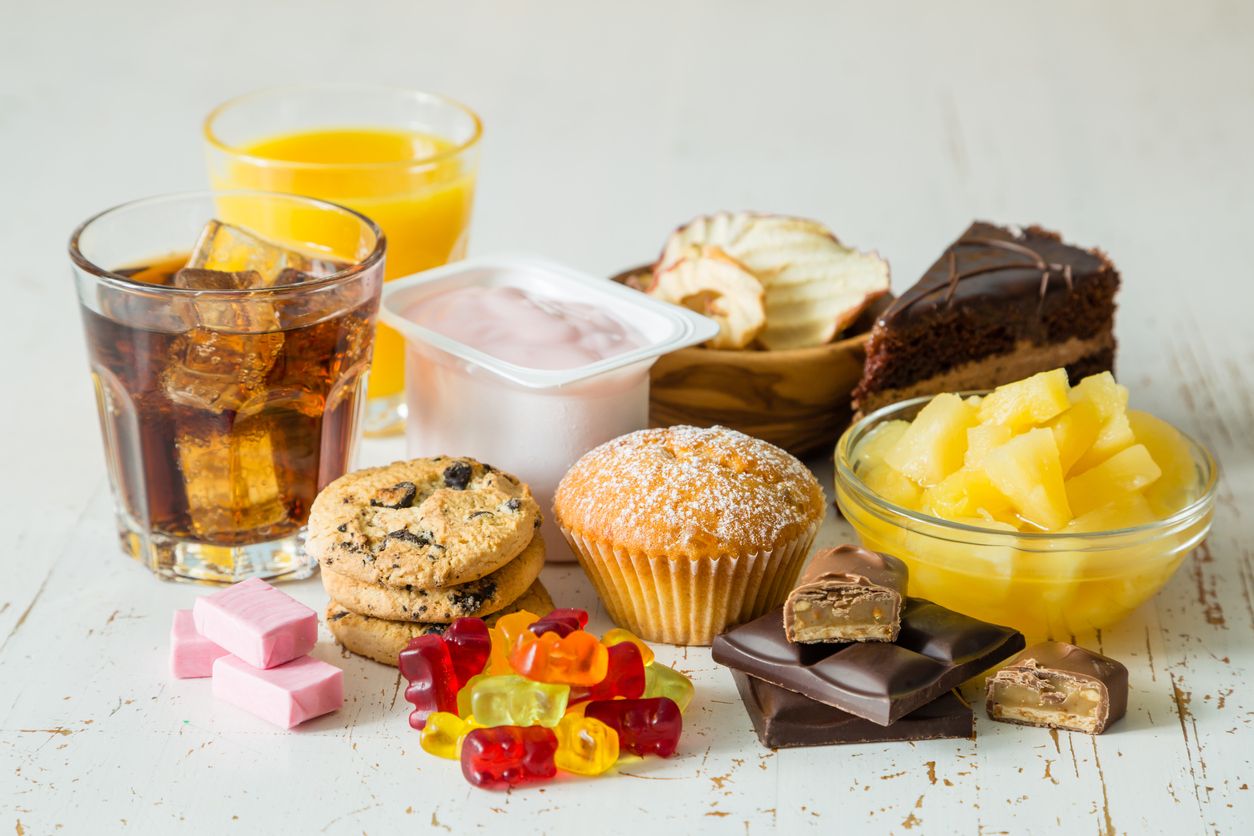
Take-away message
● Many people in the UK overconsume sugar and this can cause problems when managing our dental health and weight, as well as our risk of heart disease and metabolic conditions like type 2 diabetes.
● You can find out how much sugar is in a product on the back-of-pack label under the carbohydrates ‘of which sugars’ section. Those with less than 5g of sugar per 100g or less than 2.5g per 100ml are considered low in sugar, while above 22.5g per 100g or 11.25g per 100ml is high. Anything in between is medium.
● Sugar content can also be found in the front-of-pack traffic light label, where red indicates it is high in sugar, amber is medium and green is low.
● Nutrition labels tell us the ‘total sugars’ within a product, but this figure can include those added by the manufacturer, called ‘free sugars’, and those naturally occurring in things like whole fruits, vegetables and milk. ‘Free sugars’ are those that can be harmful to our health when had in excess and it is these that we should be working to reduce.
● Working out the ‘free sugar’ content of products can be tricky, so a good guide can be to check to see if sugar is high in the ingredients list and to limit our intake of foods typically high in these sugars such as biscuits, chocolate, cakes, fizzy drinks, soft drinks, fruit juices and smoothies.
For inspiration on healthy low-sugar foods and recipes, sign up to the program below!



